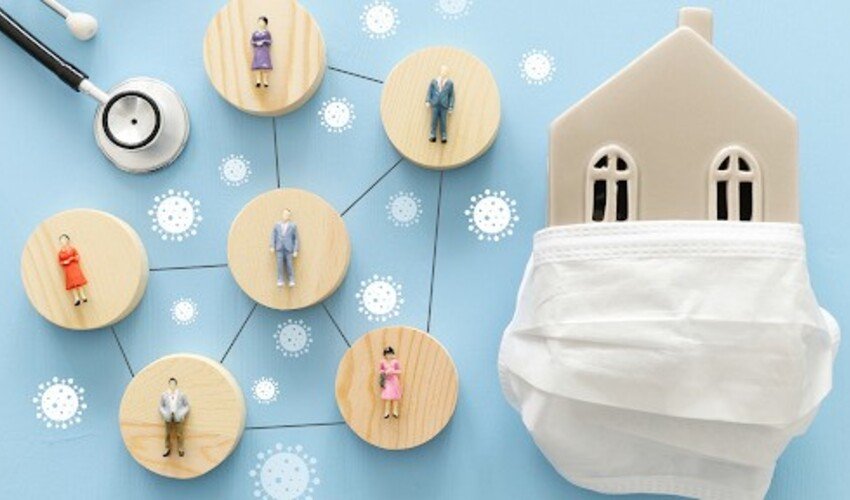Healthcare providers are discovering that waiting for patients to show symptoms isn’t enough anymore. Traditional approaches often miss critical warning signs that could prevent serious health complications. Social determinants of health, factors as housing instability, food insecurity, and transportation barriers significantly impact patient outcomes long before clinical symptoms appear.
For example, predictive analytics in primary care settings has led to up to 48% improvement in early disease identification rates for conditions such as diabetes and cardiovascular disease. This dramatic improvement highlights how real-time data collection can transform healthcare delivery. When providers can access current information about patients’ living conditions, employment status, and social supports, they’re better positioned to intervene before health crises develop.
Understanding Real-Time SDOH Data Collection
Real-time data collection represents a fundamental shift from traditional healthcare monitoring approaches. Instead of relying on outdated information collected during annual visits, providers now have access to current patient insights that reflect immediate social and environmental conditions.
Breaking Down Traditional Barriers
Traditional healthcare systems often struggle with incomplete social information about patients. Many providers lack visibility into factors like recent job loss, housing changes, or family stress that directly impact health outcomes.
Real-time SDOH monitoring addresses these gaps by continuously collecting relevant social data through various channels. This approach helps identify at-risk patients before they require emergency interventions.
Mobile Platform Integration
Mobile technology has revolutionized how healthcare organizations collect social determinant information. Patients can now report changes in their living situations, employment status, or access to resources through user-friendly apps. This real-time patient data enables providers to respond quickly to changing circumstances that might affect health outcomes.
Patient-Centered Reporting Systems
Modern reporting systems prioritize patient convenience and engagement. Rather than lengthy surveys during clinic visits, patients can provide updates about their social circumstances when it’s convenient for them. These systems capture more accurate information because patients aren’t rushed or stressed during medical appointments.
Healthcare organizations are recognizing that effective early intervention requires understanding the complete picture of patient circumstances, not just clinical symptoms.
Transforming Patient Insights into Action
Collecting real-time social determinant data is only valuable when it leads to meaningful interventions. Healthcare organizations must develop systematic approaches to convert this information into actionable care plans.
Immediate Risk Assessment
Healthcare data analytics platforms can analyze incoming social determinant information to identify patients at immediate risk. For example, a patient reporting recent job loss might be flagged for medication adherence support or financial counseling resources. This proactive approach prevents small problems from becoming major health crises.
Proactive Care Coordination
Care teams can use real-time social data to coordinate interventions before patients experience health complications. If a patient reports transportation difficulties, the care team might arrange telehealth appointments or connect them with community transportation services. This prevents missed appointments and medication non-adherence.
Community-Level Interventions
Real-time data collection also reveals community-wide trends that require broader interventions. When multiple patients in a neighborhood report similar challenges, healthcare organizations can partner with community organizations to address systemic issues.
The key to successful intervention lies in having systems that can quickly translate social determinant information into specific, actionable care plans.
Healthcare Data Analytics for Early Detection
Advanced analytics platforms are transforming how healthcare organizations identify and respond to social determinant risks. These systems can process vast amounts of real-time data to identify patterns that human reviewers might miss.
Predictive Modeling Applications
Machine learning algorithms can analyze patient-reported outcomes alongside social determinant data to predict which patients are most likely to experience health complications. These models consider factors like housing stability, food security, and social support networks to generate risk scores. Healthcare teams can then prioritize interventions for high-risk patients.
Integration with Clinical Workflows
Successful analytics platforms integrate seamlessly with existing clinical workflows. When providers access patient records, they can immediately see current social determinant information alongside medical history. This integration ensures that social factors are considered during all patient interactions, not just during specialized social work consultations.
Performance Measurement Tools
Healthcare organizations need ways to measure the effectiveness of their social determinant interventions. Analytics platforms can track outcomes like reduced emergency department visits, improved medication adherence, and better chronic disease management among patients receiving social support services.
Organizations that effectively integrate healthcare data analytics with real-time social determinant monitoring see measurable improvements in patient outcomes and cost management.
Implementation Success Stories
Healthcare organizations across the country are seeing remarkable results from implementing real-time social determinant monitoring systems. These success stories demonstrate the practical value of turning insights into early interventions.
Primary Care Transformation
Primary care practices using real-time social determinant data report significant improvements in patient engagement and health outcomes. When providers understand patients’ current social circumstances, they can tailor treatment plans to address both medical and social needs. This comprehensive approach leads to better adherence to treatment recommendations and fewer emergency interventions.
Population Health Management
Health systems are using aggregated social determinant data to identify community health priorities and allocate resources more effectively. By understanding the social challenges facing their patient populations, organizations can develop targeted programs that address the root causes of health disparities.
Cost-Effective Solutions
Real-time social determinant monitoring often prevents expensive emergency interventions. By identifying and addressing social barriers early, healthcare organizations reduce costly hospital readmissions and emergency department visits. The investment in data collection and intervention programs typically pays for itself through reduced acute care costs.
These success stories demonstrate that real-time social determinants of health monitoring isn’t just theoretically valuable; it produces measurable improvements in patient outcomes and healthcare costs.
Moving Forward with Real-Time Interventions
Real-time social determinant monitoring represents a fundamental shift toward proactive, patient-centered healthcare. Organizations that embrace this approach are seeing measurable improvements in patient outcomes while reducing costs. The technology exists to collect and analyze social determinant data effectively; the challenge now is implementation and integration with existing care processes.
Success depends on viewing social determinants not as background information, but as active factors that require immediate attention. When healthcare organizations can respond quickly to changing social circumstances, they can prevent health crises before they develop, creating better outcomes for patients and communities alike.
Quick Answers to Common Questions
- How does real-time SDOH data collection differ from traditional surveys?
Real-time collection captures current conditions through continuous monitoring rather than outdated information from annual visits, enabling immediate response to changing circumstances.
- What types of interventions work best with real-time social determinant data?
Proactive interventions like transportation assistance, medication support programs, and community resource connections work best when triggered by current social data.
- How do healthcare organizations ensure patient privacy with real-time data collection?
Organizations use secure, HIPAA-compliant platforms with patient consent processes and data encryption to protect sensitive social information throughout collection and analysis.



